Tycho
Tycho's proposed experiement that would prove the earth goes around the sun.

|
Figure 1.3
Schematic Representation of stellar Parallax. Distant
stars act as a fixed reference coordinate system.
Nearby stars, when observed 6 months apart,
will show a small movement with respect to the background of fixed stars.
At position 1, the nearby star would be viewed against a background
that contained star B while 6 months later, at position 2,
the nearby star would be viewed against a background
that contained star A.
|
Tycho Brahe 1546 - 1601 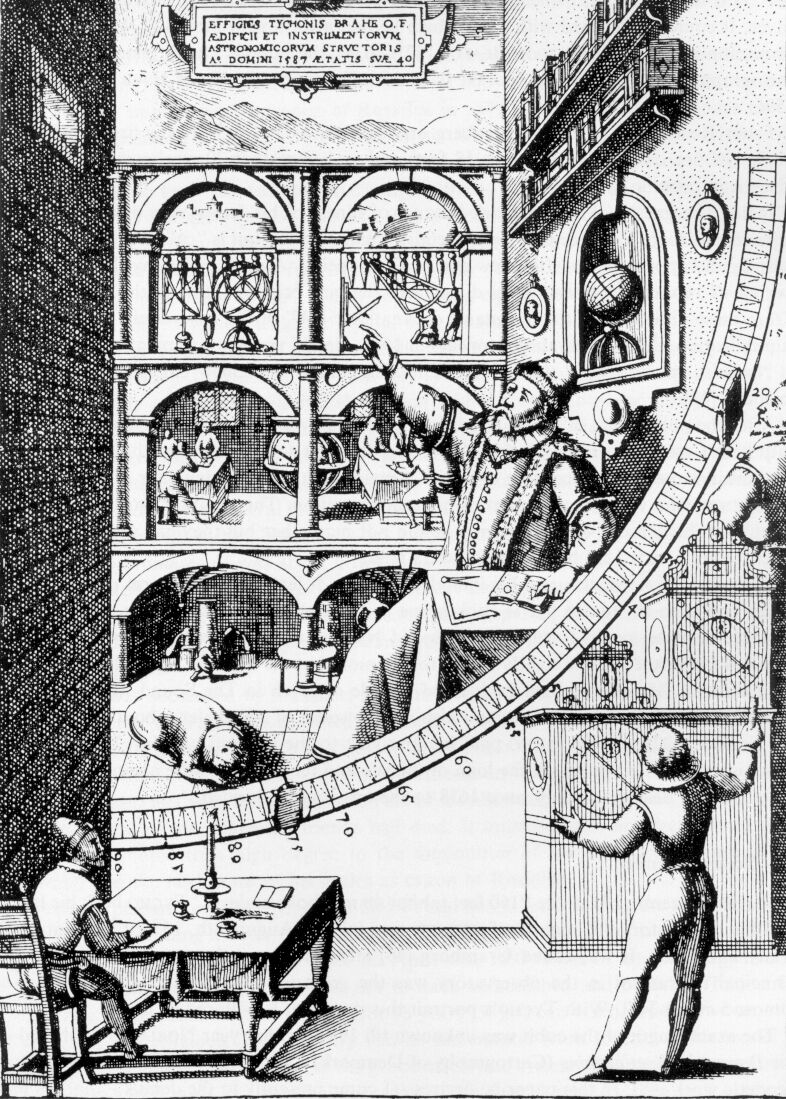
He built a very elaborate observatory at Ven that made elaborate use of
siting tubes but no telescopes since they hadn't been invented yet!
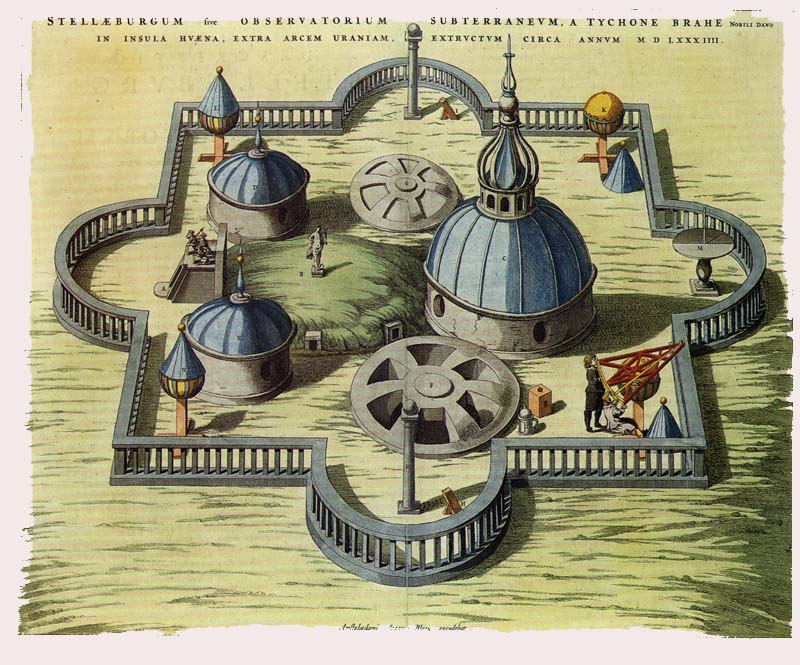
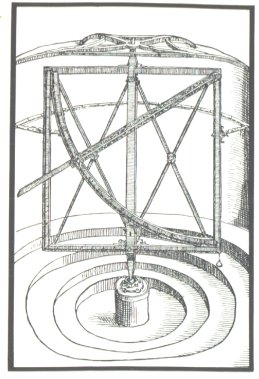
He essentially used a series of long "sextans" that could measure fairly
accurately the angle of a star above the horizon. The azimuth was measured
in degrees from some starting point in this circular observatory out portals
that were equally spaced around the floor.
This allowed him to take relatively precise data, a good example is
the data for Mars.
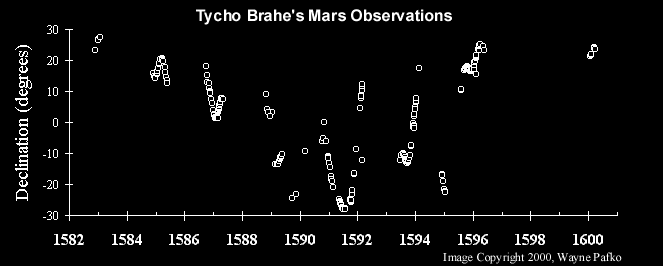
Tycho's experiment was to measure Stellar Parallax:
 The Tycho Parallax Simulator
The Tycho Parallax Simulator
Upon failing to detect stellar parallax he proposed this strange hyrbid
model for the solar system which actually opens up more questions. Fortunately,
this model didn't last very long.
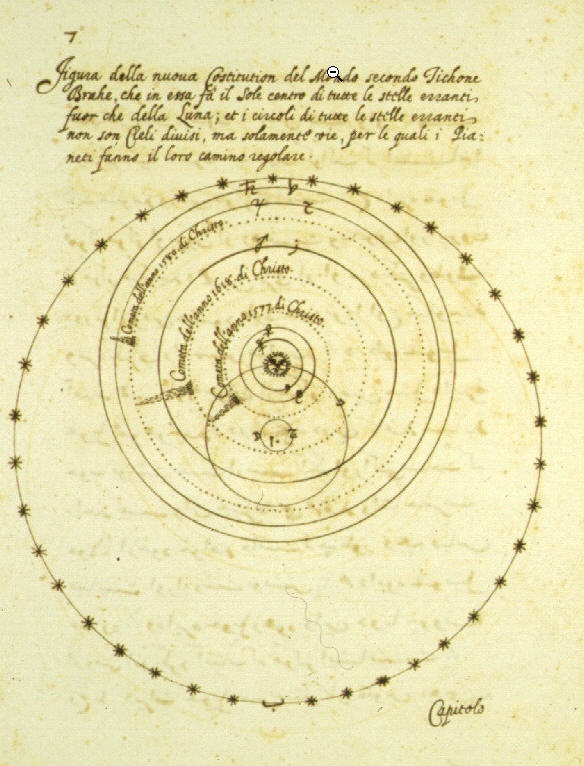
Overall contributions of Tycho:
- He made the most precise observations that had yet been made by devising
the best instruments available before the invention of the telescope.
- His observations of planetary motion, particularly that of Mars,
provided the crucial data for later astronomers like Kepler to construct our
present model of the solar system.
- He made observations of a
supernova
(literally: nova= "new star")
in 1572
(we now know that a supernova is an exploding star,
not a new star).
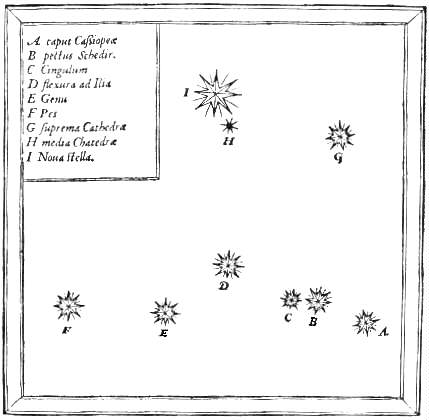 This was a "star"
that appeared suddenly where none had been seen before, and was visible for
about 18 months before fading from view. Since this clearly represented a
change in the sky, prevailing opinion held that the supernova was not really a
star but some local phenomenon in the atmosphere (remember: the heavens were
supposed to be unchanging in the Aristotelian view). Brahe's meticulous
observations showed that the supernova did not change positions with respect to
the other stars (no parallax).
Therefore, it was a real star, not a local object. This was
early evidence against the immutable nature of the heavens.
This was a "star"
that appeared suddenly where none had been seen before, and was visible for
about 18 months before fading from view. Since this clearly represented a
change in the sky, prevailing opinion held that the supernova was not really a
star but some local phenomenon in the atmosphere (remember: the heavens were
supposed to be unchanging in the Aristotelian view). Brahe's meticulous
observations showed that the supernova did not change positions with respect to
the other stars (no parallax).
Therefore, it was a real star, not a local object. This was
early evidence against the immutable nature of the heavens.
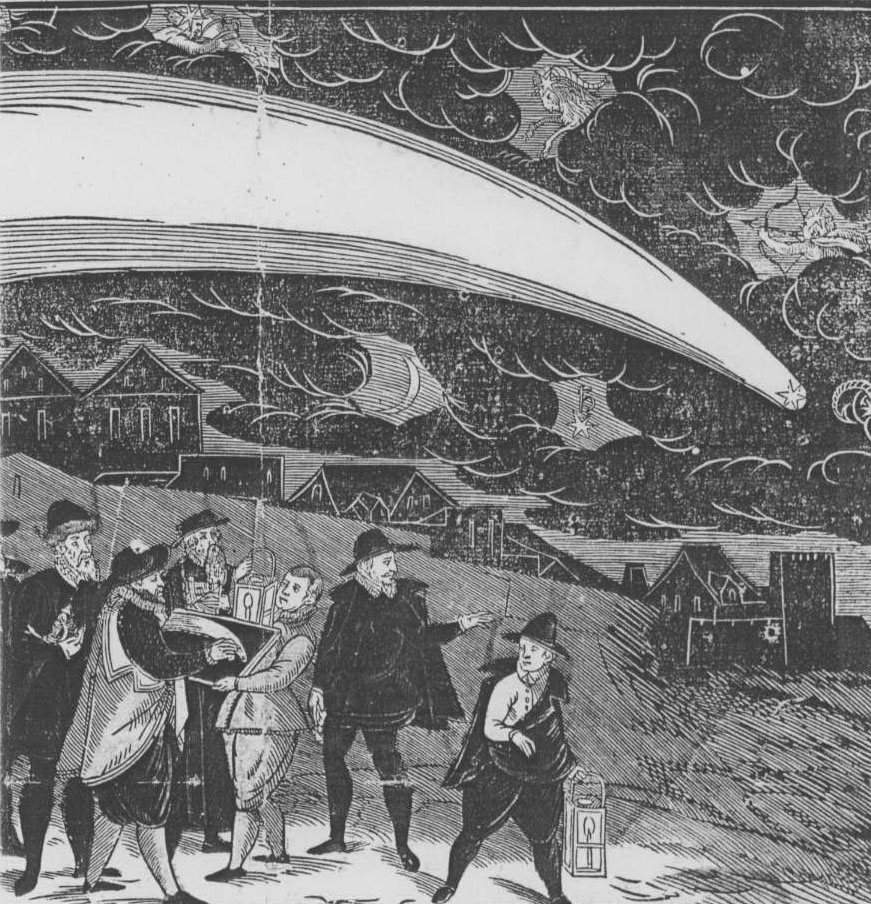
- Brahe made careful observations of a comet in 1577. By measuring the
parallax for the comet, he was able to show that the comet was further away
than the Moon. This contradicted the teachings of Aristotle, who had held that
comets were atmospheric phenomena ("gases burning in the atmosphere"
was a common
explanation among Aristotelians). As for the case of the supernova,
comets represented an obvious
change in a celestial sphere that was supposed to be
unchanging; furthermore, it was very difficult to ascribe uniform circular
motion to a comet.
- He made the best measurements that had yet been made in the search for
stellar parallax. Upon finding no parallax for the stars, he
(correctly) concluded that either
- the earth was motionless at the center
of the Universe, or
-
the stars were so far away that their parallax was too
small to measure.
Not for the only time in human thought, a great thinker
formulated
a pivotal question correctly,
but then made the wrong choice of possible answers:
Brahe
did not believe that the stars could possibly be so far away and
so concluded that the Earth was the center
of the Universe and that Copernicus was wrong.
- Brahe proposed a model of the Solar System that was intermediate between
the Ptolemaic and Copernican models (it had the Earth at the center). It
proved to be incorrect, but was
the most widely accepted model of the Solar System for a time.
Thus, Brahe's ideas about his data were not always correct, but the quality
of the observations themselves was central to the development of modern
astronomy.







 This was a "star"
that appeared suddenly where none had been seen before, and was visible for
about 18 months before fading from view. Since this clearly represented a
change in the sky, prevailing opinion held that the supernova was not really a
star but some local phenomenon in the atmosphere (remember: the heavens were
supposed to be unchanging in the Aristotelian view). Brahe's meticulous
observations showed that the supernova did not change positions with respect to
the other stars (no parallax).
Therefore, it was a real star, not a local object. This was
early evidence against the immutable nature of the heavens.
This was a "star"
that appeared suddenly where none had been seen before, and was visible for
about 18 months before fading from view. Since this clearly represented a
change in the sky, prevailing opinion held that the supernova was not really a
star but some local phenomenon in the atmosphere (remember: the heavens were
supposed to be unchanging in the Aristotelian view). Brahe's meticulous
observations showed that the supernova did not change positions with respect to
the other stars (no parallax).
Therefore, it was a real star, not a local object. This was
early evidence against the immutable nature of the heavens.